Unleash the Power of Lifting Equipment for Efficient Operations
Date Posted:6 September 2024
Unleashing the power of cutting-edge lifting equipment can transform your business operations, driving productivity and efficiency to new levels.
In today’s dynamic business landscape, where speed and efficiency are non-negotiable, the tools you use can either propel you forward or hold you back. Enter lifting equipment – the unsung hero of efficient operations. From towering cranes to nimble hoists, lifting equipment is designed to tackle heavy lifting with grace and precision. If you’re looking to supercharge your operations, it’s time to discover how unleashing the power of modern lifting equipment can transform your productivity and streamline your processes.
The Modern Marvel of Lifting Equipment
Lifting equipment has come a long way from simple pulleys and ropes. The latest advancements blend technology with engineering prowess, offering solutions that are not only powerful but also intelligent. Here’s why today’s lifting equipment is a game-changer:
- High-Tech Innovation: Modern lifting equipment boasts features like smart controls, real-time monitoring, and automated systems. These innovations ensure that every lift is executed with pinpoint accuracy, reducing the risk of errors and boosting operational efficiency.
- Enhanced Ergonomics: Ergonomic design is a hallmark of contemporary lifting equipment. Adjustable heights, intuitive controls, and easy manoeuvrability are crafted to reduce strain on operators and enhance safety, making the equipment more user-friendly.
- Robust Build: Today’s lifting gear is built to endure. Constructed from high-strength materials such as stainless steel or heavy-duty composites, modern lifting equipment can handle substantial loads while maintaining durability and reliability.
Lifting Equipment Elevates Efficiency
Integrating advanced lifting equipment into your operations isn’t just about moving heavy loads – it’s about enhancing every aspect of your workflow. Here’s how lifting equipment can elevate efficiency across your business:
- Accelerated Processes: The speed at which lifting equipment can move items dramatically reduces the time needed for various tasks. Whether it’s loading goods onto trucks, shifting materials across a warehouse, or transferring components on a production line, faster operations lead to higher productivity.
- Minimised Physical Strain: By automating the heavy lifting, modern equipment takes the physical burden off your team. This reduction in manual handling not only improves safety but also allows your workforce to focus on more complex, value-added tasks.
- Optimised Workflow: With the ability to handle multiple tasks and adapt to different scenarios, advanced lifting equipment helps streamline workflow. From precise placement of goods to efficient storage solutions, these tools contribute to a more organised and efficient operation.
- Improved Safety: Advanced lifting equipment comes equipped with a range of safety features, including load sensors, automatic braking systems, and emergency stop buttons. These features help prevent accidents and ensure that lifting operations are carried out safely.
- Reduced Downtime: The reliability and durability of modern lifting equipment mean fewer breakdowns and maintenance issues. Reduced downtime ensures that operations run smoothly, minimising disruptions and maintaining consistent productivity.
Versatility Across Industries
The benefits of cutting-edge lifting equipment extend across a variety of industries. Here’s a snapshot of how different sectors can leverage these powerful tools:
- Manufacturing: In the manufacturing sector, lifting equipment is crucial for handling raw materials, components, and finished products. Automated lifting systems streamline production lines, reduce manual handling, and enhance overall efficiency.
- Warehousing and Logistics: For warehouses and logistics providers, lifting equipment facilitates the swift movement of goods, inventory management, and order fulfilment. The ability to handle large volumes with ease optimises storage and distribution processes.
- Construction: In construction, cranes, hoists, and forklifts are indispensable for lifting heavy materials to elevated areas. This capability speeds up construction projects and enhances safety on site.
- Retail: Retail environments benefit from lifting equipment when it comes to restocking shelves, managing inventory, and handling merchandise. Efficient lifting solutions improve store operations and enhance customer service.
- Healthcare: Hospitals and healthcare facilities use lifting equipment to move medical supplies, equipment, and patients. The efficiency and precision of modern lifting tools are vital for maintaining high standards of care.
Selecting the Right Lifting Equipment
To fully harness the power of lifting equipment, selecting the right tools for your specific needs is crucial. Consider the following factors:
- Load Capacity: Choose equipment that matches the weight and type of loads you need to handle. Ensuring the lifting gear can manage your operational requirements is essential for safety and efficiency.
- Technological Features: Look for equipment with advanced features such as smart controls, real-time data, and automated functions. These technologies enhance precision, performance, and overall productivity.
- Material and Build: Opt for lifting equipment made from durable, high-quality materials. A robust build ensures longevity and reduces the risk of equipment failure.
- Ease of Use: Select equipment that is user-friendly and offers intuitive controls. Proper training and ease of operation contribute to effective use and maximised productivity.
- Safety Features: Ensure the equipment includes essential safety features such as load sensors, emergency stops, and secure braking systems. Safety should always be a top priority.
Implementing Lifting Equipment in Your Operations
To make the most of advanced lifting equipment, follow these steps for successful integration:
- Assess Your Needs: Evaluate your current lifting requirements and identify areas where advanced equipment could improve efficiency. Consider the types of tasks and loads you need to handle.
- Choose the Right Equipment: Based on your assessment, select lifting equipment that meets your specific needs. Consult with suppliers if necessary to ensure you choose the best option for your business.
- Train Your Team: Provide comprehensive training for your staff on how to operate the equipment effectively. Proper training ensures safe and efficient use of the tools.
- Monitor Performance: Regularly review the performance of your lifting equipment and gather feedback from your team. Adjustments and maintenance will help optimise performance and ensure long-term efficiency.
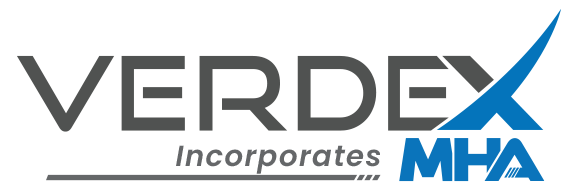


































































































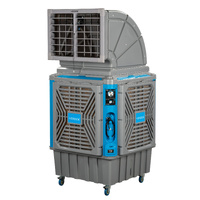









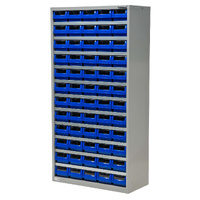


















 Trolleys & Hand Trucks
Trolleys & Hand Trucks Cage Trolleys
Cage Trolleys Cleaning Carts & Trolleys
Cleaning Carts & Trolleys Construction Trolleys
Construction Trolleys Custom Trolleys
Custom Trolleys Hand Trucks & Dollies
Hand Trucks & Dollies Laundry/Linen Trolleys
Laundry/Linen Trolleys Lifting Trolleys
Lifting Trolleys Order Picking Trolleys
Order Picking Trolleys Panel Cart Trolleys
Panel Cart Trolleys Platform Trolleys
Platform Trolleys Powered Trolleys
Powered Trolleys Shelf & Tiered Trolleys
Shelf & Tiered Trolleys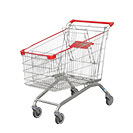 Shopping Trolleys
Shopping Trolleys Stainless Steel Trolleys
Stainless Steel Trolleys Tool Trolleys
Tool Trolleys Utility & Service Carts
Utility & Service Carts Lifting & Handling Equipment
Lifting & Handling Equipment Forklift Attachments
Forklift Attachments Jib Attachments
Jib Attachments Lifting Hoists & Pallet Hooks
Lifting Hoists & Pallet Hooks Load Skates & Tow Tugs
Load Skates & Tow Tugs Manual Stackers & Lifters
Manual Stackers & Lifters Pallet Jacks
Pallet Jacks Pallet Lifters
Pallet Lifters Pallet Rotators & Dispenser
Pallet Rotators & Dispenser Powered Pallet Trucks & Electric Lifters
Powered Pallet Trucks & Electric Lifters Scissor Lift Trolleys and Tables
Scissor Lift Trolleys and Tables Conveyor Equipment
Conveyor Equipment Conveyor Frames & Stands
Conveyor Frames & Stands Roller & Skate Conveyors
Roller & Skate Conveyors Ladders & Access Equipment
Ladders & Access Equipment Container & Yard Ramps
Container & Yard Ramps Ladders & Step Stools
Ladders & Step Stools Work Platforms & Crane Cages
Work Platforms & Crane Cages Drum Handling Equipment
Drum Handling Equipment Drum Storage & Bunding
Drum Storage & Bunding Drum Trolleys & Lifters
Drum Trolleys & Lifters Forklift Drum Handling
Forklift Drum Handling Waste Handling & Bins
Waste Handling & Bins Bin Lifters & Tippers
Bin Lifters & Tippers Plastic Waste & Wheelie Bins
Plastic Waste & Wheelie Bins Steel Waste & Tipping Bins
Steel Waste & Tipping Bins Waste Carts
Waste Carts Dangerous Goods Storage & Spillage
Dangerous Goods Storage & Spillage Aerosol Cans Storage Cages
Aerosol Cans Storage Cages Bunded Pallets & Storage
Bunded Pallets & Storage Corrosive Goods Storage Cabinets
Corrosive Goods Storage Cabinets DG Storage & Trolleys
DG Storage & Trolleys Flammable Liquid Cabinets
Flammable Liquid Cabinets Forklift Gas Storage Cages
Forklift Gas Storage Cages Site Storage
Site Storage Spill Kits
Spill Kits Shelving & Storage Equipment
Shelving & Storage Equipment Stillage & Transport Cages
Stillage & Transport Cages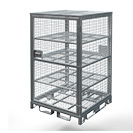 750 Series Cage Configurations
750 Series Cage Configurations Heavy Duty Cabinets
Heavy Duty Cabinets Heavy Duty Shelving
Heavy Duty Shelving Mega Bins & Pallets
Mega Bins & Pallets Packing & Workbenches
Packing & Workbenches Parts Trays & Stor-Pak Bins
Parts Trays & Stor-Pak Bins Pegboard & Louvre Panels
Pegboard & Louvre Panels Plastic Bins & Crates
Plastic Bins & Crates Plastic Handling Solutions Bins
Plastic Handling Solutions Bins Plastic Pallets
Plastic Pallets Stack & Nest Bins
Stack & Nest Bins Pallet Racking Accessories
Pallet Racking Accessories Workplace Equipment
Workplace Equipment Modular Workbenches
Modular Workbenches Electric Height-Adjustable Workbenches
Electric Height-Adjustable Workbenches Floor Matting
Floor Matting General Workplace Equipment
General Workplace Equipment Industrial Weighing Scales
Industrial Weighing Scales Packaging Machinery
Packaging Machinery Stationery Cupboards
Stationery Cupboards Storage and Stillage Cages
Storage and Stillage Cages Tool Trolleys
Tool Trolleys Tooling Cabinets
Tooling Cabinets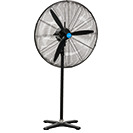 Workshop Fans and Coolers
Workshop Fans and Coolers Safety Barriers, PPE & Signage
Safety Barriers, PPE & Signage Barriers & Bollards
Barriers & Bollards First Aid Equipment
First Aid Equipment Gloves, Knives and PPE
Gloves, Knives and PPE Signage
Signage Cleaning & Site Supplies
Cleaning & Site Supplies Cleaning Equipment
Cleaning Equipment Cleaning Trolleys
Cleaning Trolleys Rubbish Bins
Rubbish Bins Signs & Traffic Supplies
Signs & Traffic Supplies Construction Equipment
Construction Equipment Construction Trolleys
Construction Trolleys Waste Handling
Waste Handling General Site Equipment
General Site Equipment Concrete Equipment
Concrete Equipment Site Storage
Site Storage Lifting Equipment
Lifting Equipment Verdex Specials
Verdex Specials










